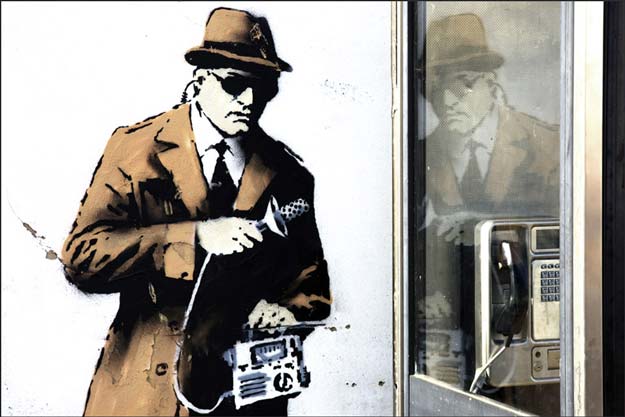
In an apparent effort to make the secret services more transparent, the five-step guide illustrated with the image of an old-school spy in a trenchcoat was published on the monitoring agency's website.
Entitled "How does an analyst catch a terrorist?", it takes readers through the ways in which GCHQ analysts identify a suspicious stranger spotted overseas.
Under the scenario, the guide says an MI6 source based overseas spots a leader of the Islamic State group handing a stranger a message containing information "that will cause carnage across London".
GCHQ then work to identify the stranger's tablet, which leads them to checking his online behaviour -- and come up with a name to pass onto MI6 agents.
"The ability to use fragmentary information to build theories and perform complex searches against our metadata can narrow down thousands of options quickly," the case study concludes.
A GCHQ spokesperson told AFP in an email that the study "underlines the strong culture of compliance to the overarching legal regime that governs all of GCHQ's activities".
The extent to which Britain's intelligence agencies can monitor communications data is the subject of long-running political debate, and one that is likely to return to parliament after the general election.
Read: UK tribunal says sharing intelligence with US was unlawful
Foreign Secretary Philip Hammond, whose Conservative party is seeking re-election in May, said Tuesday that it would seek to introduce legislation soon after the vote.
It would "give our agencies, clearly and transparently, the powers they need, and to ensure that our oversight regime keeps pace with technological change and addresses the reasonable concerns of our citizens", he said.
GCHQ and the US National Security Agency were at the centre of a storm over the extent of their communications snooping by leaker Edward Snowden but responded saying that they respected the law.
Read: British intelligence agency intercepted emails of journalists from top media outlets
In January, the Guardian newspaper reported that GCHQ had tapped the emails of journalists at some of the world's biggest media including Le Monde, The New York Times and The Washington Post.

















COMMENTS
Comments are moderated and generally will be posted if they are on-topic and not abusive.
For more information, please see our Comments FAQ